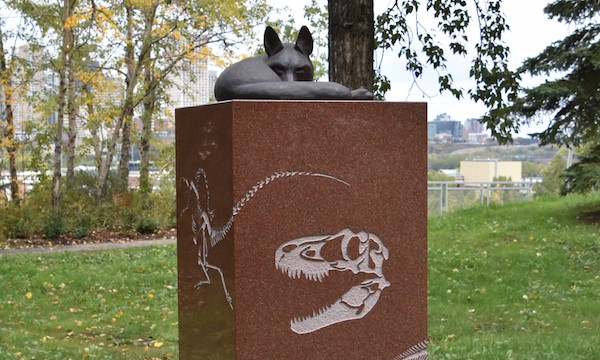A connection to the past and present: Mary Anne Barkhouse walks us through Ottawa’s natural history

This feature story is part of a series profiling the Indigenous artists behind the Ādisōke Indigenous Public Art program.
When Ādisōke opens in 2026, it will not only serve as Ottawa’s new Central Library and home of Library and Archives Canada’s in-person services in the National Capital Region, but it will also be a place to see breathtaking works of Indigenous art. Mary Anne Barkhouse is one of the artists whose work will be featured in the new facility.
Since time immemorial, a wide range of species have called the area now known as LeBreton Flats home. From beavers to herons, many animals have been part of the local ecosystem over the past millennia, and Mary Anne Barkhouse hopes she can put some of that history on display for Ādisōke.
“What excites me the most is to share the imagery of these species… to show how these animals relate to each other, which ultimately is how they relate to us and to underline the importance of making accommodations for the wild in our increasingly urbanized landscape.” explained Mary Anne, an artist from the Namgis First Nation in British Columbia, who now lives in Ontario.
Through her work, she wants to show how humans and animals will need to share space, to coexist and make allowances for that. Which is why, when her art will be unveiled, Mary Anne hopes visitors won’t see the pieces as static depictions but rather the vitality of these different species. “I try to capture a moment in their daily lives, whether that’s curled up sleeping or looking like they’ve been caught in the midst of an activity.”
This work speaks to Mary Anne’s passion for wildlife and offering a window into our communal history with these species. To deepen her understanding, she spent considerable time poring over the archives at Library and Archives Canada, as well as looking through the different fossils, botanical and geological specimens in the collections of the Canadian Museum of Nature and the Geological Survey of Canada, to better understand and display the land’s history.
For Mary Anne, she hopes her tireless work will “add to the overall experience of what this land is and to inspire others to pursue their own investigations into nature and history.”
A connection to LeBreton Flats
The site where Ādisōke is located has undergone changes over time. From what was once a wetland, we now see a more urbanized area. This transformation is inspiring Mary Anne’s work and includes a high-profile event from 2018.
In July of that year, preparations for the annual Bluesfest music festival had to be paused following the discovery of a killdeer and its nest. The unexpected visitor led organizer to contact a nearby wildlife sanctuary to assist in moving the nest to ensure minimal impacts to the mother and her eggs.
Rediscovering this story sparked Mary Anne’s creativity and inspired her research into the local wildlife. While she wants to keep what animals will be featured in her work a surprise for the opening, she indicated there will be a species of bird among them.
Mary Anne Barkhouse’s work at Ādisōke will not only showcase the rich natural history of LeBreton Flats but also emphasizes the importance of coexistence between humans and wildlife. Through her art, she invites us to reflect on our shared past and consider our role in preserving the environment for future generations.
To find out more about Mary Anne’s work visit maryannebarkhouse.ca. To learn more about the Indigenous Public Art program, visit adisoke.ca.
